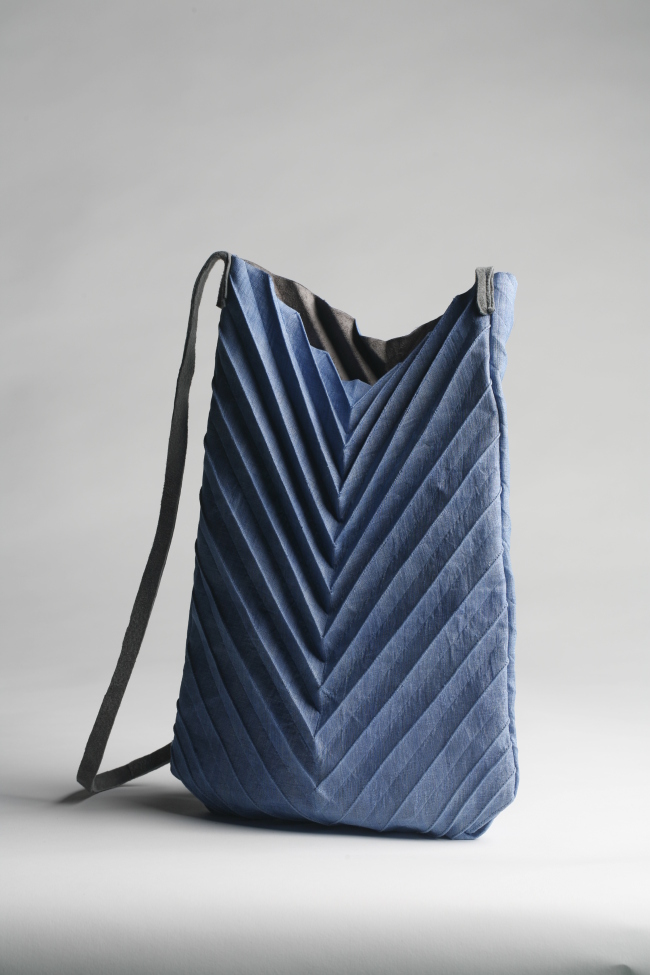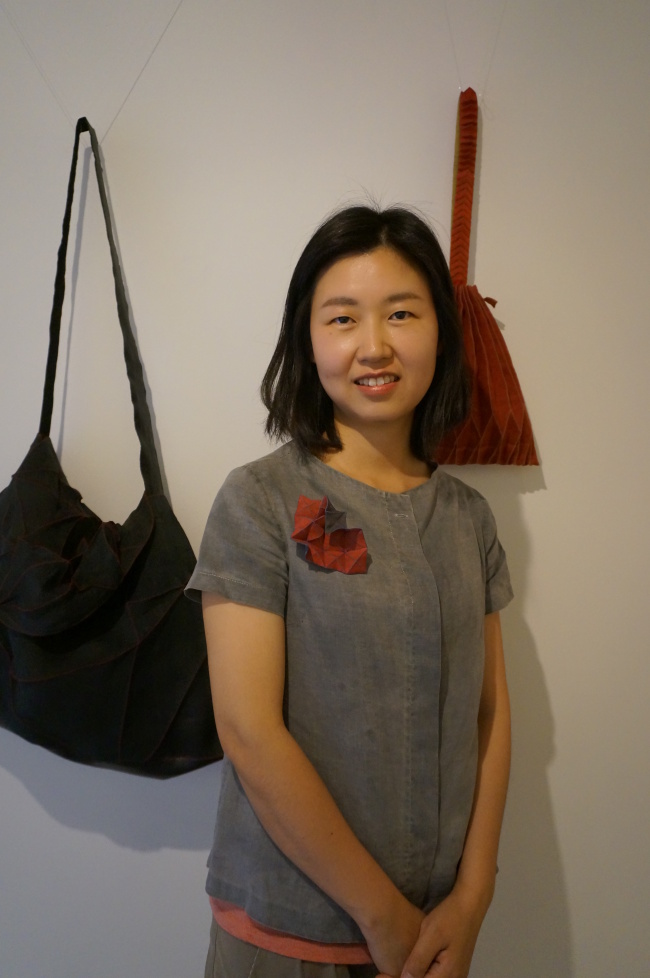Up & Coming is a series of interviews with emerging artists in various fields of arts and entertainment. ― Ed.
Threads and needles were playthings for artist Jo Ha-na during her childhood.
She grew up stitching leftover pieces of fabric her grandmother gave her after making hanbok, or traditional Korean dress, outfits at home.
She stitched the fabrics together to make miniature hanbok or clothing for her dolls.
 |
Bags created by artist Jo Ha-na. (Yeol) |
Sewing is now her secret weapon to make unique accessories such as handbags, clutches and brooches that work for both traditional hanbok and contemporary womenswear.
Jo is one of a new generation of young crafts artists who inherited the traditional sewing techniques from previous generations and integrated them into creating accessories applicable to modern lifestyle and fashion.
“Hand sewing is the foundation of what I do,” said Jo, in an interview with The Korea Herald on Wednesday.
Jo was named the young crafts artist of the year in 2014 by Yeol, a private cultural heritage foundation. She has received numerous crafts awards from central and provincial government organizations since 2003.
The 36-year-old artist recently showed her creations at the Yeol gallery in Seoul. From Friday, she holds another exhibition at Lotte Gallery in Daejeon, running to June 10.
 |
Jo Ha-na. (Lee Woo-young/The Korea Herald) |
When women’s roles as seamstresses and tailors started to reduce at home, their traditional sewing techniques started to disappear, too. However, Jo acquired them naturally watching her grandmother making hanbok for her family.
Jo combines traditional Korean sewing techniques and folding methods to create unique designs for modern handbags and accessories.
“Our ancestors used a variety of folding techniques to make everyday pouches and a lot of play tools, including the windmill-shaped ‘baramgaebi‘ and the slap-match ‘ttakji-chigi,’” said Jo, adding that traditional folding methods are still found in modern hanbok pouches.
Her brooches and handbags are works of art. She stitches carefully calculated folded lines, creating delicate geometric lines that sometimes resemble accordion pleats or natural leaf patterns. Jo also uses naturally dyed textiles such as ramie, silk and cotton to prevent allergies from chemical materials.
Most of her works are handmade. Her small accessories, such as brooches, take about two to three days to complete, while her bags can take up to 15 days.
“People said they like the effort, energy and time dedicated to make a single accessory,” said Jo.
Jo recently started using a sewing machine for bags to make them more durable. And to give a sturdy support for belongings inside, she attaches the natural, delicate fabrics to leather, giving it its durable quality. In addition, she has come up with ways to recreate the hand-stitched quality with a sewing machine.
“Traditional craft skills should evolve according to the needs of modern lifestyle. They have to be passed onto future generations while keeping its links to the roots,” Jo said.
By Lee Woo-young (
wylee@heraldcorp.com)









![[Weekender] Korea's traditional sauce culture gains global recognition](http://res.heraldm.com/phpwas/restmb_idxmake.php?idx=644&simg=/content/image/2024/11/21/20241121050153_0.jpg)